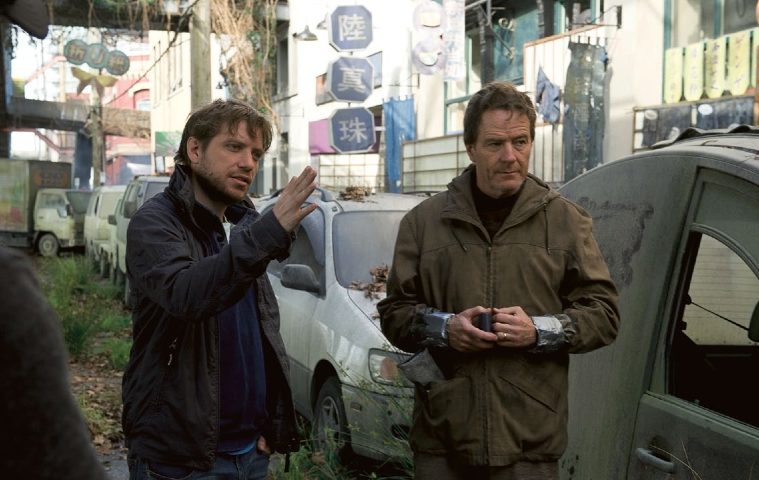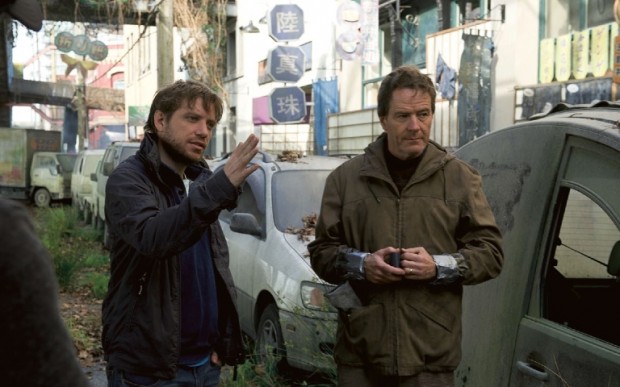
Considering the age of the original Gojira, I won’t bother giving a traditional review of my experience during the SXSW screening of a restored 35mm print. Instead, I’ll reveal something somewhat shameful in small circles: I had never seen the original 1954 Toho classic. Thankfully, that all changed due to the festival’s special presentation by director Gareth Edwards, in promotion of his upcoming blockbuster remake with Warner Brothers and Legendary, Godzilla. The director didn’t come empty handed, however, as he brought with him a new trailer and a special clip just for the audience, and then stuck around for a Q&A moderated by Jessica Chobot.
First, let’s discuss the original Gojira and what an initial experience was like in my late 20’s. I had always assumed that the schlock factor was embraced early on; we’ve likely all heard of the sequels and the enemies of Godzilla, like Mothra and other ridiculous creatures. While the follow-ups look to highlight giant monsters going at it and leaving Tokyo and Japan in general in tatters, the original film plays everything surprisingly straight. While there were some laughs from the audience towards the very 1950’s world it represents in Japan (women aren’t very well respected in a political environment) or the general creature effects, I was taken aback by how tough and dramatic the themes were, focusing on our place in this world.
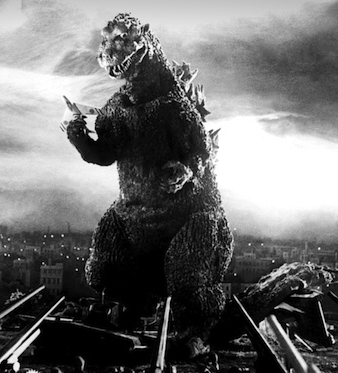 There’s no secret that director Ishiro Honda was using Godzilla as a representation of the H-bomb and how it was nearly unfathomable in the amount of destruction; in fact, the H-bomb is heavily mentioned throughout the original and it is hinted that humanity’s follies with nuclear testing is the reason why this particular creature exists. While I was watching I was struck by just how much the film stays honest; the fear captured is palpable when Godzilla starts to terrorize the locals. I can’t imagine what it was like to be part of the cast and crew making a film like this — who could’ve predicted this lasting legacy?
There’s no secret that director Ishiro Honda was using Godzilla as a representation of the H-bomb and how it was nearly unfathomable in the amount of destruction; in fact, the H-bomb is heavily mentioned throughout the original and it is hinted that humanity’s follies with nuclear testing is the reason why this particular creature exists. While I was watching I was struck by just how much the film stays honest; the fear captured is palpable when Godzilla starts to terrorize the locals. I can’t imagine what it was like to be part of the cast and crew making a film like this — who could’ve predicted this lasting legacy?
Some of the translation is, of course, a bit silly, but more than anything there is an incredible amount of myth building that went into the film. They approach Godzilla from a very scientific side, whether it is the ancient trilobite that they find in one of Godzilla’s footprints or the use of carbon dating the soil samples the creature tracks throughout Japan. Additionally, despite the effects at times obviously being dated 21st century eyes, I have to admit they are implemented quite well. I was struck by the mystery of the entire process and would encourage anyone to seek out the film as it tours the country beginning next month.
With the screening over, I was ready to hear from Edwards on his iteration of the classic. I’ll be upfront in my enduring love and appreciation for Edwards’ Monsters, a low-budget science fiction flick that snowballed out of SXSW four years ago. It was his first feature and as he mentioned during the Q&A, it seemed like a good way to get another low-budget feature approved and made. Instead, it served as a springboard for Edwards, and he was offered the job by WB and Legendary.
Starting off the Q&A, Edwards said that it felt like a real homecoming to be at the Alamo Ritz. “Generally, a lot of filmmakers when they go in to do a talk or tour, they try to personalize it but I genuinely mean this.” He had screened the film at the Alamo Drafthouse at a midnight screening and when they hit play he was “sh*tting” himself. That’s when everything changed for Edwards and to return the favor, he decided to bring a clip of one of his favorite scenes in the film. It was rough and had been screened before to press in London but this was the first public screening of the footage to date and it went over like gangbusters. Nearly six minutes of footage was shown, and the scale of the events is absurd.
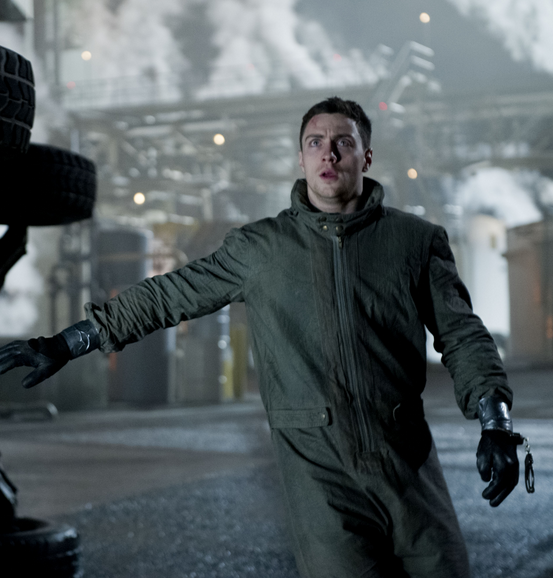 We begin in an airport monorail in Hawaii with star Aaron Taylor-Johnson riding alongside a Japanese boy. You’ll learn that he is part of the army, but here he’s dressed as a civilian. When the train stops suddenly and a power surge goes throughout the city, our first glimpse of Godzilla is shown as fire is erupting and a tsunami is approaching to devastate the town. We see how Edwards is going to implement the history of Godzilla, with Ken Watanabe‘s Honda claiming that this was a creature seen as far back as 1954. The size of Godzilla is always hinted at, as we see glimpses of his tail, etc., but rarely fully on display.
We begin in an airport monorail in Hawaii with star Aaron Taylor-Johnson riding alongside a Japanese boy. You’ll learn that he is part of the army, but here he’s dressed as a civilian. When the train stops suddenly and a power surge goes throughout the city, our first glimpse of Godzilla is shown as fire is erupting and a tsunami is approaching to devastate the town. We see how Edwards is going to implement the history of Godzilla, with Ken Watanabe‘s Honda claiming that this was a creature seen as far back as 1954. The size of Godzilla is always hinted at, as we see glimpses of his tail, etc., but rarely fully on display.
Although he’s never shown in full frame, we see the soldiers in the town attack the creature to little effect and learn that we’ve been trying for years to contain this creature. Just when you think things can’t get worse, we see a new creature named Hokmuto, that reminded me of the StarCraft Zerg in terms of the head and upper body. Then, Godzilla shows up on the scene to presumably duke it out with this other creature. He gives a gigantic roar and the clip ended.
When Chobot asked about what makes Godzilla such an enduring character, Edwards replied, “That’s the ultimate question and one we asked ourselves over and over.” He went on to say, “For thousands and thousands of years we’ve lived with nature and every day there’s a chance that an animal is going to attack us, kill us, steal our food, or destroy our village. It’s deep in our DNA that an animal is going to come today or tomorrow. In modern society, which is such a small span of time in humanity, we’ve built these massive cities and we pushed nature out. But it’s still very strong in us that an animal is going to come and ruin everything that we’ve built. So we’ve gone from a cave, to huts, and now to these 30-story buildings and our nightmares that we worry about become 30 stories as well.”
When asked how the look of Godzilla resembles the 1954 Toho version and what makes that the gold standard, Gareth described witnessing a crime and seeing something just in the periphery. He went on to say that he felt the creature design was the easiest task in the film, “Because it’s done. Just do that. Then you start to get literal about it and you build these 3D models. Imagine this is a real animal that exists and 60 years ago, someone saw him off the coast of Japan and they went running to Toho and they tried to explain him. They drew him and they went to make their movies and made the guy in the suit outfit, and so you can see how they would arrive at that creature from what we have in the actual film.”
He also discussed how much pressure he is under, saying, “As much as you might try, you can’t make a film for someone else. You’ve got to make a film that you want to sit and watch. Thomas [Tull] is the producer, who is a massive Godzilla fanboy and is the whole reason this movie is happening. We made this film so we can sit in the cinema one day and have a little fanboy freakout. And it just so happens that the way this business works is that we release it to the world and everyone else gets to see it too. It feels like you’ve been a surrogate mother or something.“
The sound design and the famous Godzilla roar was a topic Chobot asked about and Gareth had a great story about how his own sound designer, Erik Aadahl, won’t even tell him what he used. “The classic one was a double bass with a leather glove with some resin on it and for some reason they fluked out and got this particular sound that they could never repeat. If you listen to a lot of the Godzilla movies, it’s that same thing. So we bought some leather gloves, a double bass, and some resin and wasted a lot of time trying to do this roar. I keep asking him what it is but he’s like, ‘I’ll tell you when the film is over because if you know it’s going to spoil it for you. You’ll always be hearing that sound.’ So I don’t actually know.”
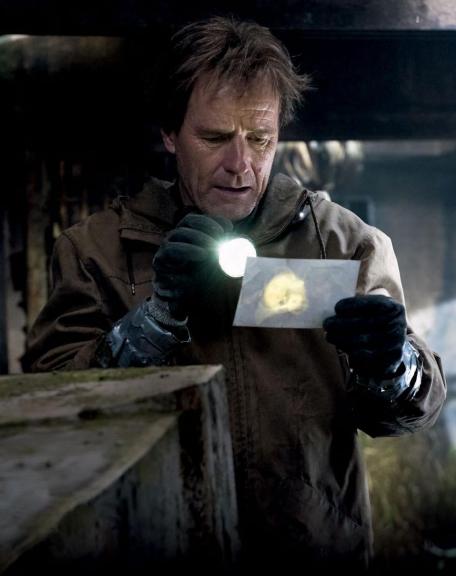
Chobot then asked, “Did you ever think you would end up in this space, doing your own Godzilla movie?” “No f*cking way,” Edwards immediately responded to much laughter, but then opened up about the intense schedule and how often he has to keep working. “The thing is, it’s criminal to go, ‘Oh no, I’ve got to go and film Godzilla.’ But it does feel that way after a while. It’s such a marathon. Even now. We haven’t stopped in over two years. It’s been 16-18 hour days, seven days a week, for two years solid. I was joking on the way here, but it wasn’t a joke. There are people having fun and there’s people in the street getting drunk and it’s like, ‘Oh, freedom!’ ‘No Gareth, come on, you’ve got to do a Q&A.’”
On his biggest challenge, Edwards says, “I grew up with the Spielberg movies that hit this holy grail sweet spot of cinema which is the spectacle and epic imagery but you also got the emotion and you care about the characters. I really wanted to tap into that style of filmmaking. You have the visuals but there’s also some heart to it. It’s not some throwaway popcorn movie.”
When it comes to the enduring legacy of the 1954 classic that we just watched, Edwards agreed with my thoughts, saying, “There’s a lot of loving laughter, but it takes itself very seriously. I challenge anybody to point to any film, let alone a monster movie, where a doctor goes up to a toddler with a Geiger counter and gets the radiation reading and they look at each other like, ‘the kid’s going to die’, and then it moves on to another scene! What brave filmmaking. We all like to think these films were goofy and for kids. What we’re doing with all of these modern franchises and remakes is we’re taking them very seriously and making them gritty. But I think that, ‘No, no, no, 60 years ago, they beat you to it.’ This is pretty serious filmmaking.”
Some may question if this a sequel to the original, where it wipes the slate clean of all the sequels, but Edwards says, “It’s not a sequel to the 1954 movie. As much as you want to make a film for fans, I really want to make a film for people who aren’t fans so they can become fans.” Edwards does run into his fair share of fans, as one might expect. He says, “I’ve spent the last two years of my life talking about the film, and when they’re about to walk away they lean over and whisper, ‘I love Godzilla. I grew up with him. Don’t f*ck it up.'”
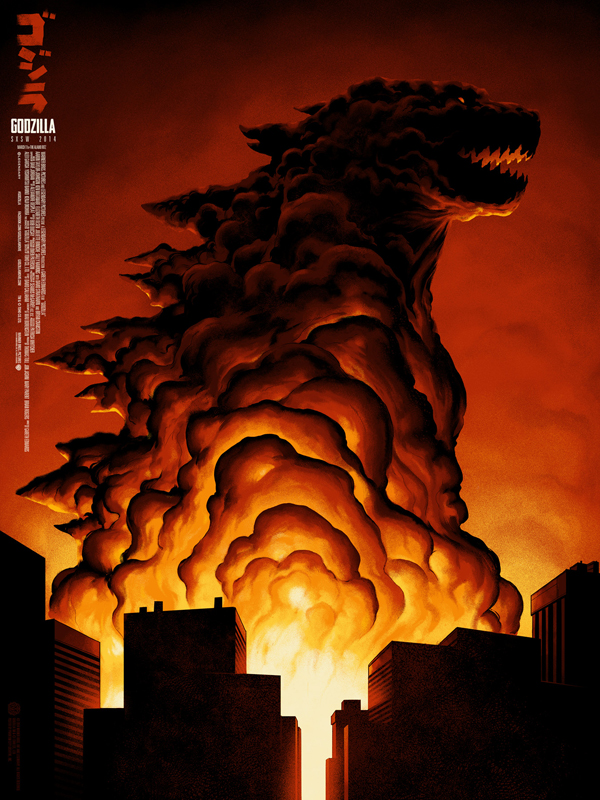
Edwards’ Godzilla hits theaters on May 16th, while the original will tour the country starting next month.

